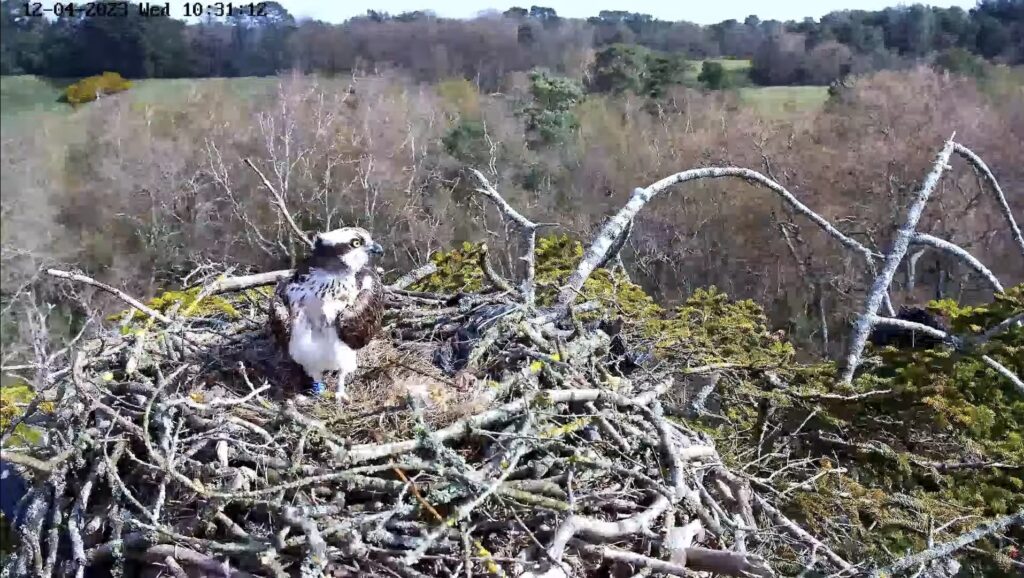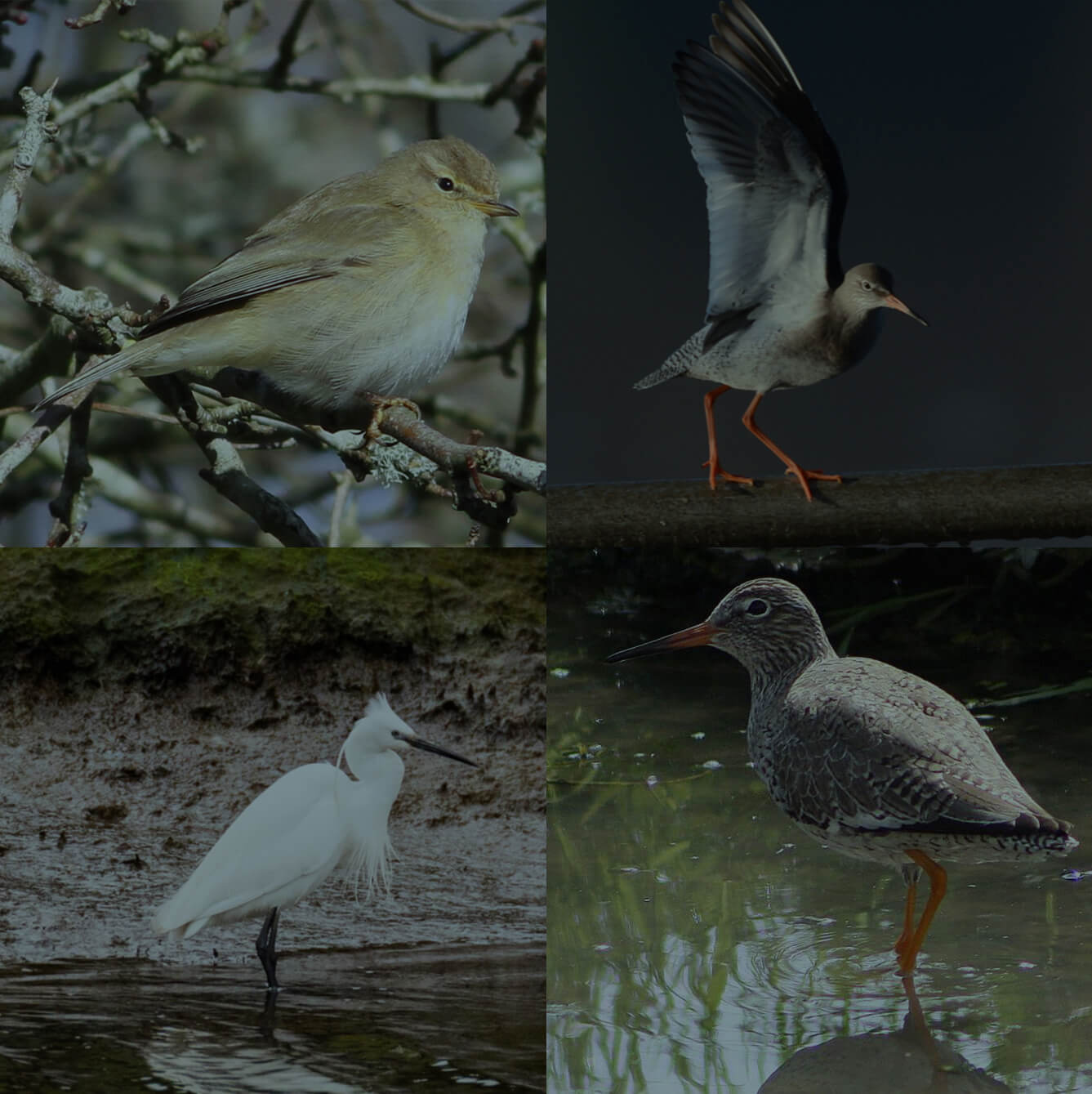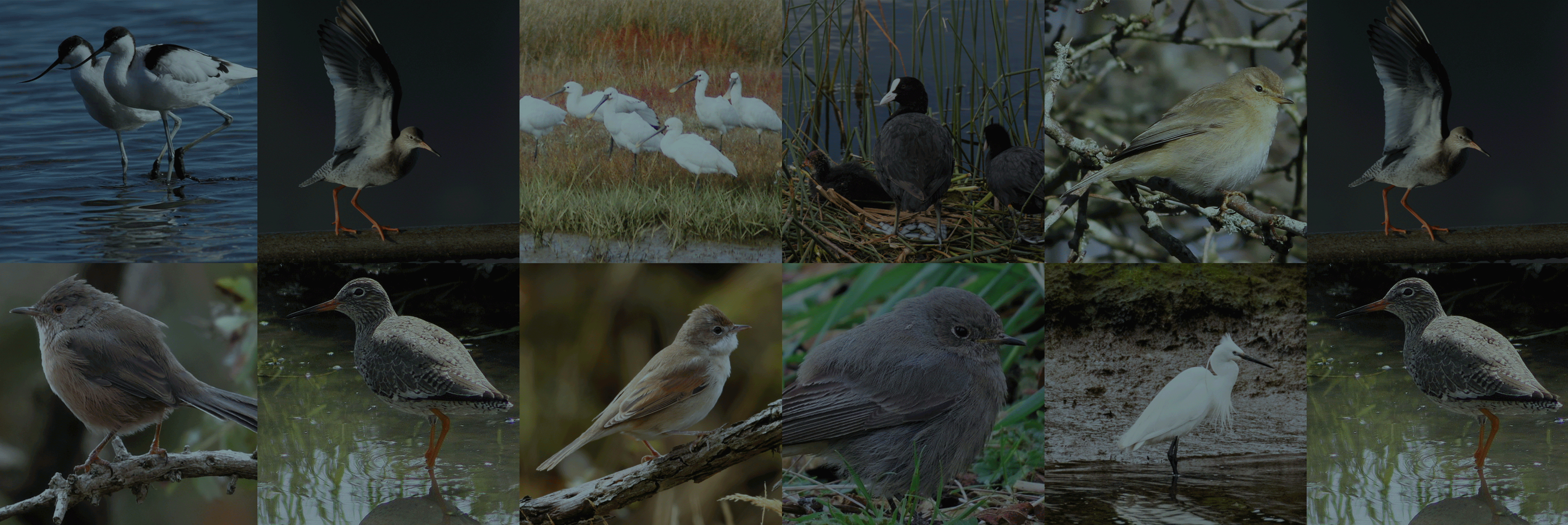Since their return, our Osprey pair have both been busy adding material to their nest in preparation for breeding. This has included a variety of natural objects including moss and grass to line the nest cup and sticks to build up the nest wall. However on Friday 7th April our male 022 brought in a far less desirable lining material: a sheet of black plastic. Over the course of the bank holiday weekend he brought in several more pieces, some of which have since blow away (a preferable outcome for the Ospreys but not for the habitats they will have blown into), though the original piece remains weighed down by added later sticks.
We believe that the plastic is discarded agricultural waste that has come from nearby farmland. In order to reduce the risk of any more being brought in we have been out looking for potential locations where 022 might have collected it and we are very grateful to the neighbouring land owners who have agreed to inspect their own land and ensure any such material is removed. To an Osprey flying overhead any loose plastic sheeting such as bale wrap moving in the wind likely looks very similar to grass, and unfortunately large chunks can easily be torn off in their strong talons. Once in the nest, it catches easily on surrounding twigs and gets gradually buried as more material is brought in, making it less likely to be dislodged by the wind or the birds. Sadly is it all too common to see plastic in the nests of wild birds, and Ospreys are no exception: materials such a baler twine are often collected in a similar way, and can pose an even more serious threat of entanglement for chicks and adults. Though theoretically less severe, black plastic sheeting can still pose a potential risk to the Ospreys, and this is obviously not a desirable state of affairs so early breeding season.
In an ideal world we would be able to quickly climb the nest tree to remove the man-made material, but there are a number of other risks and limiting factors associated with this process, which must be weighed up against those of leaving the it in the nest. The first is disturbance to the birds, which could be especially detrimental at the present stage, when CJ7 is likely to begin the laying process any day now. We would not want to negatively impact them at a crucial time and risk an extreme outcome such as nest abandonment or failure. Should we conclude that the risk of this is sufficiently low and chose to make the climb up the 25+ metre nest tree, we would require a suitable weather window to do so safely. The high winds forecast for the coming days are likely to either delay this process or prolong the time it takes to reach the nest, meaning a greater potential disturbance impact on the birds. There is of course a chance that these high winds may help to dislodge the plastic but this is not guaranteed.
We will be taking all of this into account and assessing the situation further in the coming days, and will aim make a decision as to the best course of action as soon as possible. Whatever conclusion we reach however, we will ensure that it is in the best interests of the Ospreys and their success.
CJ7 in the nest with the black plastic on the right
You might also like...
Harbour Update – posted 26/07/24
It was good to get that dank, yucky murk out of the way, which allowed for some new…
Find out moreHarbour Update – posted 25/07/24
You should never right off a good days birding because of the weather, because you just never know….
Find out moreCall 01202 641 003
© 2024 Birds of Poole Harbour Registered Charity No. 1152615



